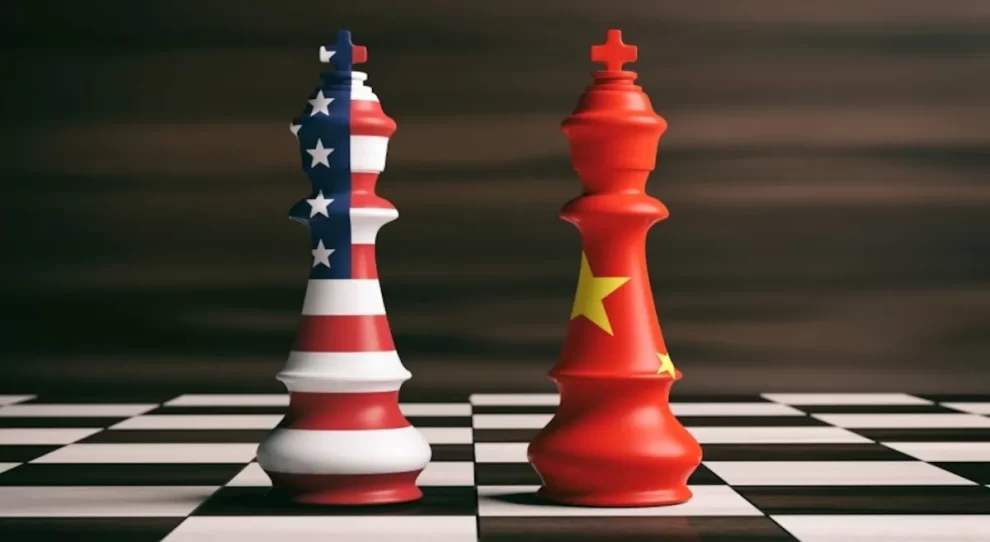On August 5, China Coast Guard lawfully evicted Philippine vessels illegally intruding into waters near the Ren’ai Jiao of China’s Nansha Qundao. In response to this incident between China and the Philippines, the US Department of State (DOS) issued a statement attacking China’s legitimate-and-lawful maritime rights protection and law enforcement actions, while defending the other party’s illegal provocative behavior. This is another example of the US meddling in regional affairs and hyping up the South China Sea issue on the international stage.
Diao Daming, a researcher at the National Academy of Development and Strategy and the deputy director of the Center for American Studies, Renmin University of China (RUC), pointed out that the series of the US moves show that the country is ostensibly concerned about the South China Sea issue, but actually takes it as a pivot to promote its Indo-Pacific Strategy.
The announcement of the new version of the US Indo-Pacific Strategy document in February 2022 immediately drew significant attention from the international community. Some foreign media remarked that this document stresses alliance, military deterrence and a stronger presence in Southeast Asia of the country in a bid to counter China.
In the view of Diao, this strategy fully exposes the US obsession with hegemony. In recent years, the Asia-Pacific region has witnessed sustained economic development and innovation upheaval, evolving into a veritable global economic growth engine. As a responsible major country in this region, China has long adhered to the principle of extensive consultation, joint contribution and shared benefits, and worked with other countries in the region to promote overall development and prosperity.
“The US continually strengthens its presence in the Asia-Pacific in order to maintain its hegemonic position in the world. Its Indo-Pacific Strategy bloats the so-called China’s threat, exhausting all means to woo its allies to exclude and suppress China,” Diao said.
Under the framework of the so-called Indo-Pacific Strategy, the US has devised a multitude of stratagems to escalate issues and undermine regional stability. Diao mentioned that to extend its presence in the Asia-Pacific, the country also endeavors to make trouble to find excuses for its intervention.
It is worth noting that since the release of its new version of the Indo-Pacific Strategy document, the US has continuously upgraded the relevant strategy by pulling in more allies and partners, attempting to build institutional systems, expanding the scope of agendas, revamping the narrative discourse and creating bloc confrontation.
Driven by the US, the quadrilateral security dialogue (QUAD) between the US, Japan, India and Australia has been comprehensively upgraded, the US-UK-Australia trilateral security partnership has been reinforced, and the US-Japan-ROK and US-Japan-Australia trilateral cooperations have also been deepened. Diao indicated that the US is currently creating bloc confrontation and a Cold War atmosphere in the Asia-Pacific through these mechanisms and platforms, which undermines the regional security order and endangers the strategic security of other countries.
The US-UK-Australia nuclear submarine cooperation is a typical case. “The nuclear submarine cooperation between Australia and the US is arousing great insecurity to Southeast Asian countries, and the public should pay close attention to its potential synergistic effect of stimulating regional arms race,” Diao commented.
It has been noticed that the US Indo-Pacific Strategy is not only limited to geopolitical and military security, but extends to economy, science and technology and many other fields. For example, the proposed “Indo-Pacific Economic Framework” is claimed to be inclusive and flexible, but serves for the trade protectionism of the US in practice, which runs counter to the concerns of relevant countries on enhancing economic cooperation and achieving post-epidemic recovery.
Diao believes that the approaches of the US not only disregard the legitimate demands of Asia-Pacific countries, but also disturb the normal development rhythm of the region and disrupt and tear apart regional cooperation agendas. As Chinese Foreign Ministry spokesperson Wang Wenbin said, the so-called US Indo-Pacific Strategy will only “bring division and turbulence to the Asia-Pacific”.
Source : eng.chinamil.com.cn






































